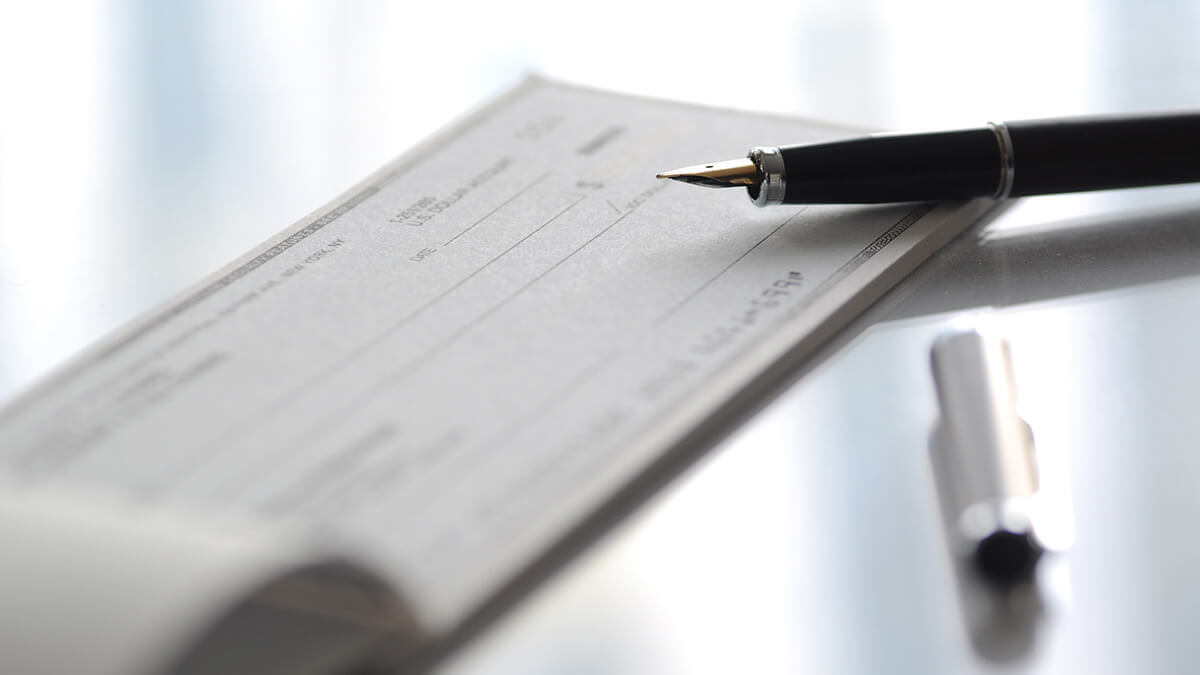So you’ve brought your product or service to market and are generating revenue. You’re well on your way to creating the business that you dreamed about. However, there could still be bumps in the road that keep you from collecting your receivables. Such as an NSF check from a customer. Not familiar? Let’s consider the NSF check definition.
What is an NSF check?
Sometimes called bounced or bad checks, NSF (non-sufficient funds) checks cannot be cashed due to insufficient funds in the payor’s account. In other words, a customer wrote a check for an amount larger than the balance of their checking account. If you receive an NSF check, you have not been paid for the good or service you provided.
You may also have to pay bank fees for negotiating a check with non-sufficient funds. As an NSF check holder, the bank could charge a returned check fee ranging from $5 to $35.
You now have an unpaid customer receivable, as well as the expense of a bank fee and the cost of the good or service you provided. You have several options for handling an NSF check that range from making a phone call to seeking legal help.
What to do as an NSF check holder
The customer’s bank might send a letter with all the details of the NSF check, including the check number, amount, and date, to the customer. As soon as the customer receives a letter, they should send a copy of it to you, along with a letter of their own explaining the situation.
Here are some actions you might take after accepting an NSF check.
Contact the customer
Clear communication is a simple, cheap solution to receiving an NSF check. In some cases, your customer may unintentionally send an NSF check. By bringing the issue to your customer’s attention, you give the customer the opportunity to pay you in full and maintain your business relationship. You can also discuss any returned-check fees you were charged and whether you expect to be reimbursed.
Write a demand letter
Sending a demand letter by certified mail can encourage a customer to pay you before more serious, and expensive, actions are necessary. The formal letter may include the check information, why it was returned, and a request for remittance of the check amount and bank fees charged to you. Give the customer a specific deadline for payment. Let them know that if you have not received payment by the due date, you will file a small claims court claim against them.
Hire a collection agency
If your company regularly runs into NSF checks from the same customers, you may want to hire a collection agency. These agencies help businesses get the money they are owed for a cut of your customer’s payment. This approach is helpful for collecting small amounts, because the agency’s cut can be cheaper than court costs.
Take legal action
If the customer refuses to pay, you can sue if your claim does not exceed your state’s small claims limit. Be sure to organize any relevant documents, including bank statements and receipts, since attorneys cannot represent you in small claims court.
A business can take two kinds of legal action against a customer who attempts to pay with an NSF check. The state recognizes that an NSF check can be both a civil issue and a criminal one.
The civil penalty is less severe and will usually set the total amount the customer has to pay your business for issuing a bad check. The amount is almost always more than the amount on the check because the customer will be expected to cover any bank and court fees your business had to pay. A customer can also be penalized for any further damages that your business may suffer due to the NSF check.
Criminal charges can get the customer arrested. A repeated pattern of writing bounced checks may be considered fraudulent activity because the checks were written with the intent of not honoring payment. However, most NSF checks are not criminally prosecuted because the issuers will pay as soon as they learn of their negligence.
Be diligent
Be diligent and professional in tracking down your payment. In some cases, getting paid may only take a phone call to a customer or bank. If you do not receive remittance after several attempts, you may have to seek outside help through collection agencies or legal assistance.
Avoiding NSF checks
You can reduce your risk for accepting NSF checks by taking these steps:
- Put a check handling policy in place and educate your employees on preventative check acceptance procedures, such as verifying customer identities and avoiding post-dated checks. Teach new employees to make sure that checks are filled out correctly and completely before finishing a transaction.
- Ask your bank to notify you the first time a check bounces. Banks can attempt to process a check twice before notifying you that the checking account has non-sufficient funds. Being aware of an NSF check the first time it fails to clear will save time and allow you to notify your customer sooner.
- Subscribe to a check authorization agency. These services allow you to scan checks at the point of sale to see if a customer has bounced checks recently. If a customer has a recent history of attempting to pay with NSF checks, you can choose to refuse the sale.
Keep track of your incoming funds with Patriot’s accounting software. Try it for free today!
This article has been updated from its original publication date of October 30, 2015.
This is not intended as legal advice; for more information, please click here.


